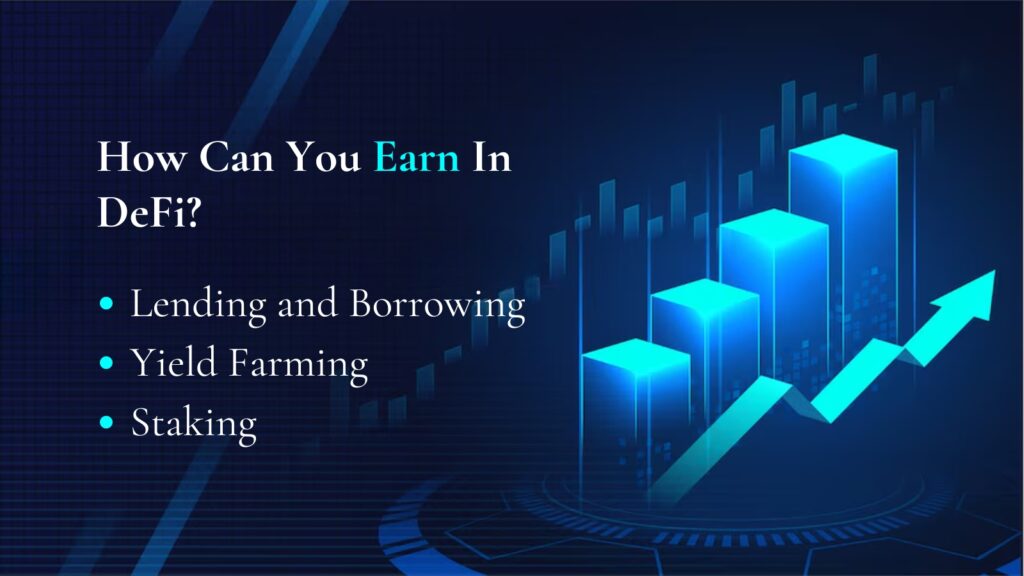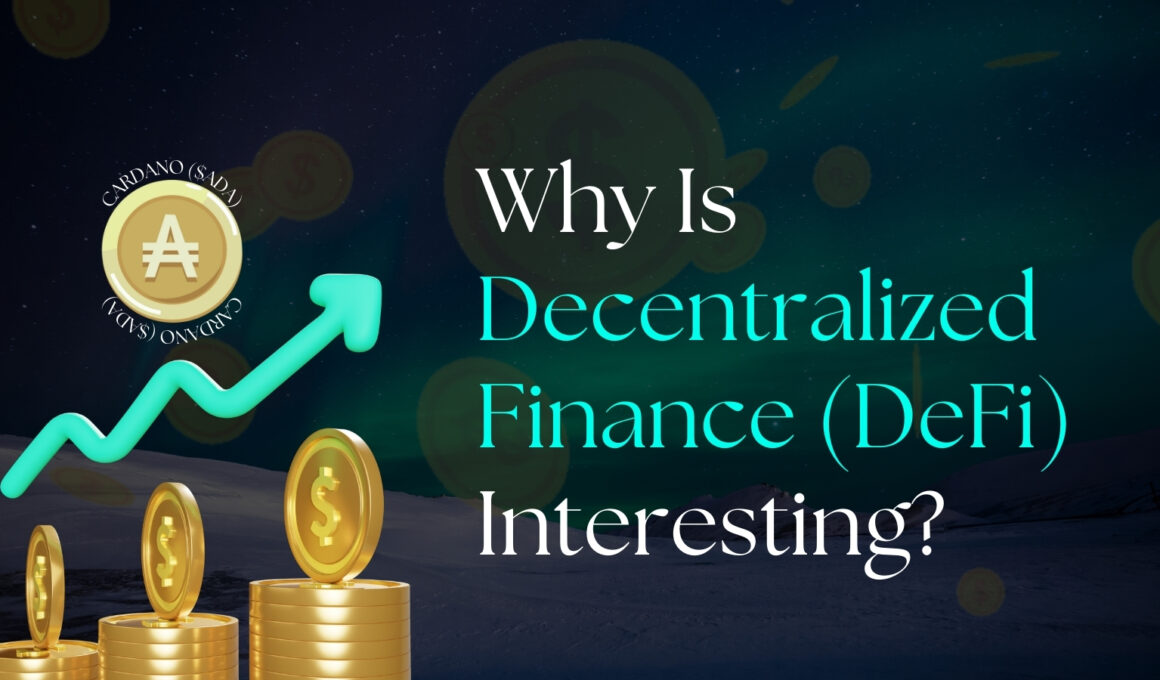Throughout the story of human search, there has always been a desire to master the tools of riches and wealth. I mean from the bartering of olden days to the rise of gold as a currency, man has chased dominion over his riches.
In our digital era, Decentralized Finance (DeFi) has come into the limelight, where one’s gold and silver take the form of cryptographic tokens, and contracts are written not with ink on parchment, but in the very language of code that computers understand.
With innovation like DeFi, your wealth no longer serves a master in the form of banks or noblemen, but becomes its own principal, able to lend, borrow, and grow by its own agreement. There are lots of ways to participate, but you have to watch your step. The prizes might be huge, but we’re talking about a journey filled with both golden tickets and hidden traps.
Key Takeaways
- In DeFi, you hold the power with no banks or middlemen just you managing your assets directly.
- Smart contracts handle everything automatically. Once you set things in motion, the code does the work, so double check before signing any transaction.
- DeFi offers great opportunities, but markets can change fast. Stay cautious and never invest more than you’re willing to lose.
What is Decentralized Finance (DeFi)?
Now that you understand how finance is evolving, let’s clarify what Decentralized Finance really means. DeFi is a financial system built on blockchain technology that lets people use digital assets without traditional intermediaries like banks or brokers.
DeFi gives you the power to lend, borrow, earn some extra cash, or swap your money across different blockchains without waiting in line at a bank. It’s fast, cheap, and you’re the boss of your own money.
Statistics show there are about 2,850 stake pools within the Cardano ecosystem, serving over 2,841,360 $ADA holders. These holders collectively contribute to a ₳22.52 billion total stake in the network. This substantial staked amount strengthens Cardano’s security and decentralization, as stake pools help validate transactions and maintain the blockchain.
With such high participation, Cardano demonstrates a healthy and active community, where staking allows users to earn rewards while supporting the network’s overall integrity. As the ecosystem grows, the number of stakers and the total stake value are expected to increase, further bolstering Cardano’s position as a major player in the decentralized finance space.

It’s important that you decide what you want from DeFi in order to set your goals and know the type of wallet you want to use before you proceed. In DeFi, your wallet is your digital bank account that stores your crypto, connects to decentralized apps (dApps), and lets you participate in all kinds of DeFi products.
You can choose from different types of wallets:
- Hot Wallets: These are online wallets like Atomic or VESPR Wallet that are super easy to use and connect directly to DeFi platforms.
- Cold Wallets: These are offline wallets like Ledger or Trezor, which store your crypto on a physical device, making them more secure but less convenient for quick trades.
Here’s a pro tip for you. Start with a hot wallet for ease of use, and once you’re comfortable, consider moving larger amounts to a cold wallet for added security. You might be wondering what powers DeFi staking, lending, and borrowing. Here’s where understanding smart contracts becomes essential.
Understanding Smart Contracts
Here’s where things get interesting. This is because without a smart contract, there’s no DeFi. Smart contracts are self-executing agreements coded directly onto the blockchain. In simpler terms, they’re digital contracts that automatically apply rules and execute actions when conditions or agreements (Consensus) are met.

Key Characteristics Of Smart Contract
- Executes automatically when conditions are met.
- Stored on a blockchain, not controlled by a single entity.
- Cannot be altered or deleted.
- Contract is written in code (e.g., Plutus for Cardano)
- All parties can view the contract and its execution.
For example, if you lend your crypto through a DeFi platform like FluidTokens, a smart contract ensures that you’ll either get your crypto back with interest or, in case of default, some collateral.
No humans are involved, which means no middlemen, no delays, and no high fees. It’s all transparent, automated, and accessible to anyone with an internet connection.
How Can You Earn in DeFi?
The real question is how can you make money using DeFi? There are a few important ways your money can become its own boss in the DeFi space.

Lending and Borrowing
DeFi allows you to lend your crypto to others and earn interest. Decentralized apps (dApps) like liqwid.finance, or paribus.io, let you deposit your crypto into a lending pool. Borrowers can then take loans from that pool and pay you interest in return.
On the other side, you can also borrow crypto by putting up collateral. This can be a good option if you don’t want to sell your assets but need liquidity. You just have to start small, get comfortable with lending and make sure to choose established platforms like Cardano DeFi Apps.
Yield Farming
Yield farming is another way of earning interest in DeFi. It’s a bit more advanced but can lead to higher returns. Basically, you provide liquidity to decentralized exchanges like Axotrade or CswapDEX, and in return you get rewarded with extra tokens.
If we properly examine how it works, yield farming is like sending your money to the gym to lift weights and come back stronger. Sometimes, you can put your crypto into what’s called Liquidity Pools. These are like communal pots where your crypto pairs up with others to facilitate trades on decentralized exchanges. In return for your contribution, you get a share of the trading fees.
Staking
Staking involves locking up your crypto assets to support a blockchain network’s operations, such as securing transactions, and in return, you earn more crypto assets. There are many DeFi platforms on Cardano, but let’s take one for example.
OptimFinance offers staking pools with appealing and modest rewards where you can go through a simple process to mint and stake OADA, receiving sOADA which earns you a 5% APR in return. It’s a low risk-way to generate passive income, often referred to as a side hustle.
Managing Risks in DeFi
You should remember, this isn’t just about avoiding risks but about understanding them so well that you can turn them into calculated moves. The DeFi vibe can be interesting, but with these tips, you can protect your assets. Keep them in mind, and you’ll trade and invest with confidence.

So there you have it. DeFi is a place where your money isn’t just sitting still but learning how to be its own boss. From staking to lending, you’ve now peeked the future where you’re the one deciding what you want from it.
But remember, DeFi is not some get rich quick scheme, it’s a new way to think about what money can do for you. It’s freedom, but with freedom comes responsibility. You’re in charge now because in DeFi, the only limit is how daring you are to explore.









